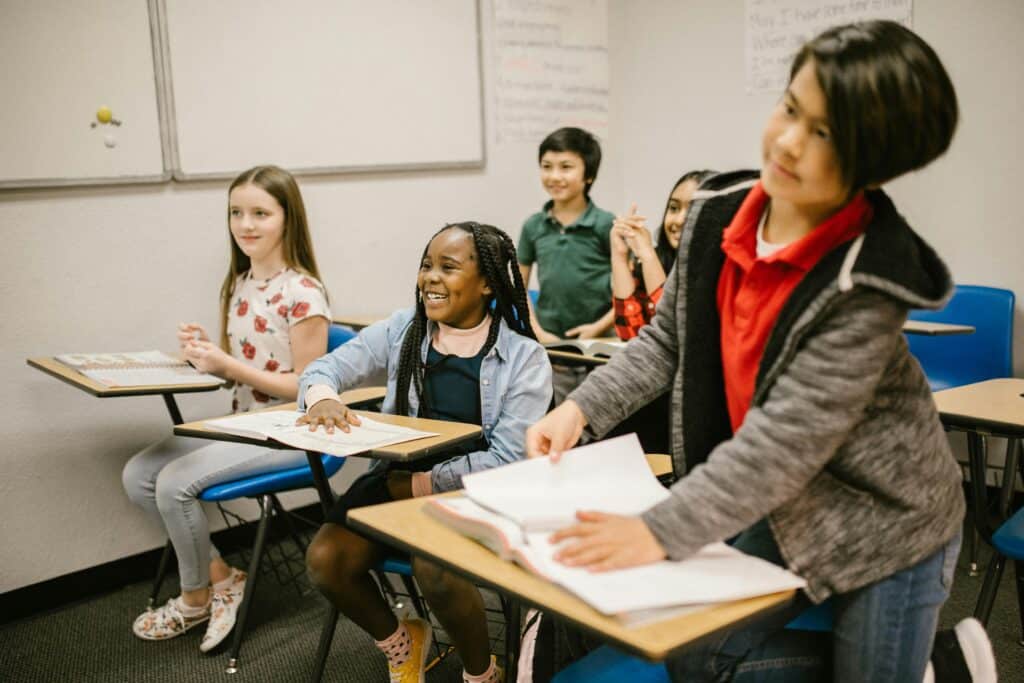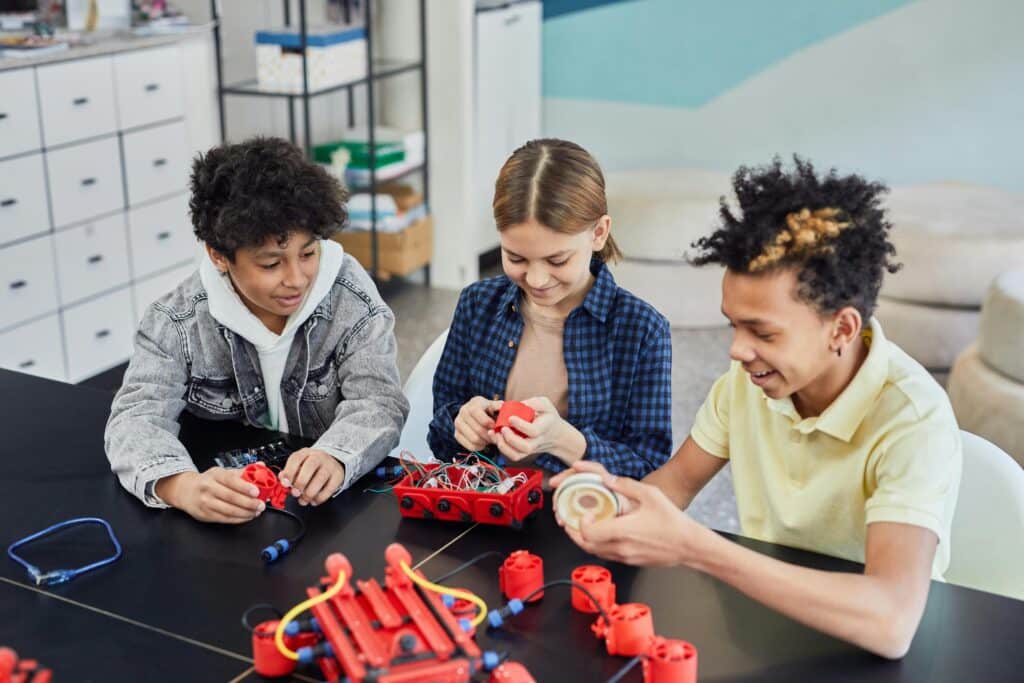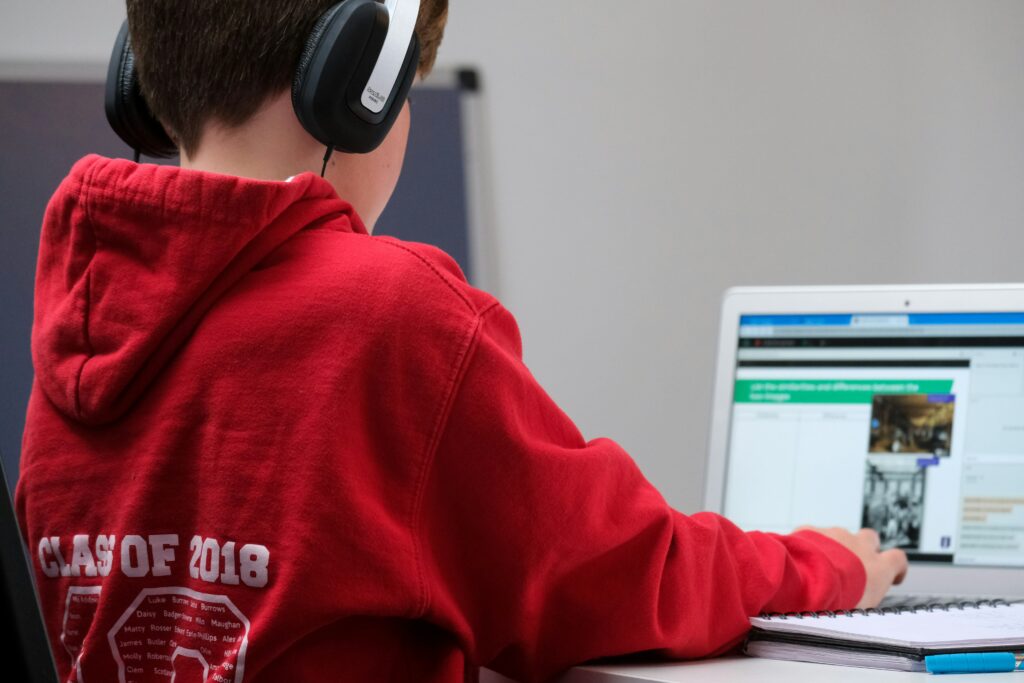A New Classroom Dawn

When Mrs. Patel began teaching twenty years ago, her morning started with chalk dust and a stack of lesson plans handwritten the night before. Attendance was taken on paper, grading was done with a calculator, and a “technology glitch” meant the projector bulb had burned out. Fast forward to today, and Mrs. Patel’s classroom looks entirely different. Her whiteboard syncs to a tablet, her students collaborate through cloud-based platforms, and artificial intelligence helps tailor assignments to individual learning needs.
This evolution illustrates a larger trend reshaping schools worldwide. The integration of technology in education has shifted teachers’ roles from knowledge deliverers to learning facilitators. According to the National Center for Education Statistics (NCES, 2023), over 94% of public school teachers now use digital tools for instruction, marking a dramatic change in how educators plan, teach, and assess.
The Changing Landscape of Teaching
Technology has not replaced teachers—it has redefined their workflow. Digital platforms reduce time spent on administrative tasks and open new possibilities for personalized instruction. For instance:
- Smart grading systems automatically analyze quizzes, allowing teachers to focus more on feedback.
- Learning management systems (LMS) like Google Classroom or Canvas centralize communication and grading.
- AI tutoring tools help teachers identify student weaknesses in real time.
- Virtual reality simulations bring abstract lessons to life.
These changes are more than convenience—they represent a shift in how learning is delivered and received. Teachers are now navigating a hybrid role: educators, data interpreters, and digital guides.
Table: How Technology Has Transformed Daily Teaching Tasks
| Traditional Task | Modern Equivalent | Time Saved | Impact on Learning |
|---|---|---|---|
| Paper attendance | Digital roll call | 5–10 min/day | Increases efficiency |
| Manual grading | AI-assisted grading | 30–60 min/day | Provides faster feedback |
| Handwritten lesson plans | Digital templates | 20 min/day | Simplifies preparation |
| Physical materials | Cloud-based resources | Varies | Enhances accessibility |
| In-person lectures | Hybrid/online lessons | Flexible | Expands reach and adaptability |
The Digital Revolution in Teaching — How Technology in Education Redefines Every Part of a Teacher’s Day

Walk into a classroom today, and you’ll see a scene far different from a decade ago. Instead of chalkboards filled with equations and neatly stacked paper assignments, teachers now balance dashboards, interactive screens, and AI-driven platforms. Technology in education hasn’t just changed how teachers teach—it’s reshaped how they plan, communicate, assess, and connect with their students.
The transformation can be summarized in five major areas: efficiency, engagement, personalization, collaboration, and professional growth. Together, these shifts represent a complete reimagining of what it means to be an educator in the 21st century.
1. Efficiency: Less Paperwork, More Purpose

Teachers have always juggled lesson planning, grading, attendance, and administrative work. Technology now takes the load off.
How efficiency tools help teachers:
- AI-assisted grading platforms like Gradescope and Formative analyze responses in seconds—reducing grading time by nearly 40% (EdTech Magazine, 2023).
- Learning Management Systems (LMS) like Canvas, Google Classroom, and Schoology centralize assignments, resources, and communication.
- Automated attendance systems cut manual roll call, saving up to 20 minutes per class period.
- Scheduling and calendar apps (like Google Workspace for Education) sync meetings, assignments, and reminders automatically.
The result:
More time to build relationships, mentor students, and innovate lessons—less time chasing paperwork. Teachers move from clerks to creators.
2. Engagement: Making Learning Come Alive

One of the most exciting impacts of technology in education is how it reignites student engagement. Interactive tools bring lessons to life, turning passive listeners into active participants.
Classroom engagement boosters include:
- Gamification platforms such as Kahoot!, Quizizz, and Gimkit make reviews feel like friendly competitions.
- Virtual and augmented reality (VR/AR) turn abstract concepts into immersive experiences—like exploring the solar system or walking through a geometric shape.
- Interactive whiteboards allow students to annotate, draw, and collaborate in real time.
- Student response systems collect instant feedback, helping teachers adjust instruction on the fly.
- Collaborative projects using platforms like Padlet and Jamboard encourage teamwork and creativity.
The payoff:
According to EdWeek Research Center (2024), interactive tools can increase classroom participation by 60–70%. When students play an active role, engagement and comprehension soar.
3. Personalization: Meeting Every Student Where They Are

The promise of personalized learning—once a dream—is now a classroom reality. Thanks to adaptive learning and AI analytics, lessons can evolve with each student’s needs.
How personalization tools reshape instruction:
- Adaptive learning platforms (DreamBox, IXL, ALEKS) adjust difficulty levels based on student progress.
- AI dashboards track performance patterns, highlighting students who need more support.
- Individualized feedback systems provide real-time insights, helping students correct mistakes early.
- Speech-to-text and translation tools remove language barriers and support special education.
Teachers report that this approach fosters a sense of ownership in students. Instead of teaching to the average, educators now teach to the individual.
Impact in numbers:
A Brookings Institution (2023) study found that classrooms using adaptive learning tools see a 20–25% increase in mastery rates, particularly in math and reading.
4. Collaboration: Connecting Beyond the Classroom Walls

In the age of technology in education, learning isn’t confined to four walls. Teachers now collaborate with peers, parents, and even experts around the globe.
How collaboration technology empowers teachers:
- Video conferencing platforms (Zoom, Microsoft Teams) connect students with guest speakers or global classrooms.
- Cloud-based collaboration tools like Google Workspace allow real-time co-editing of assignments.
- Parent communication apps (Remind, ClassDojo) keep families engaged in student progress.
- Teacher forums and online communities help educators exchange lesson ideas and strategies.
Collaboration fosters a sense of community and innovation. According to Education Week (2023), 70% of teachers report feeling more supported and creative when collaborating through digital networks.
Collaborative learning also helps students:
- Work together on projects regardless of location.
- Learn soft skills like communication and leadership.
- Gain cultural awareness through global exchanges.
5. Professional Growth: Continuous Learning for Teachers

Technology doesn’t just help teachers teach—it helps them keep learning. Professional development is more accessible, personalized, and engaging than ever before.
Digital professional growth opportunities include:
- Online certification courses in STEM, digital literacy, or classroom management.
- Webinars and podcasts that explore current research and emerging tools.
- Social learning networks where educators share real-time insights.
- AI coaching tools that provide feedback on teaching style or pacing.
According to EdSurge (2023), 82% of teachers participate in online professional learning communities—many reporting improved classroom outcomes as a result.
The benefit:
Lifelong learning becomes part of the teaching identity. Technology empowers teachers to grow at their own pace, just as they encourage students to do.
Table: Five Ways Technology Is Redefining Teaching
| Focus Area | Tools/Examples | Time or Impact | Benefit to Teachers | Benefit to Students |
|---|---|---|---|---|
| Efficiency | LMS, AI grading, scheduling apps | 30–40% time saved weekly | Frees time for creative instruction | Faster feedback and organization |
| Engagement | Kahoot!, VR, interactive whiteboards | +60% participation | More dynamic lessons | Learning becomes hands-on and fun |
| Personalization | DreamBox, IXL, data dashboards | +25% mastery gains | Targeted teaching | Tailored learning experiences |
| Collaboration | Google Workspace, Zoom, ClassDojo | Expands classroom reach | Builds global connections | Enhances teamwork and communication |
| Professional Growth | Webinars, online courses, AI coaching | Continuous skill-building | Keeps teaching methods current | Benefits from updated instructional strategies |
The Human Side of the Digital Shift
Despite all the advantages, the integration of technology in education is not without challenges. Teachers often balance excitement with apprehension—learning new systems while ensuring that human connection remains at the heart of teaching.
Balancing tech with humanity:
- Technology should enhance, not replace, teacher-student interaction.
- Educators must critically evaluate tools for equity and accessibility.
- Schools should provide time for training and experimentation, not just adoption.
When used thoughtfully, technology becomes a bridge—not a barrier—between educators and learners. It frees teachers from repetitive tasks so they can focus on mentorship, creativity, and empathy.
In Summary
The transformation from chalkboards to AI marks more than a change in tools—it’s a shift in teaching philosophy. Teachers are now data analysts, facilitators, designers, and mentors all at once. Technology in education has reshaped daily routines, but its greatest impact lies in how it redefines the purpose of those routines: to help every student reach their fullest potential.
Balancing Technology with Authentic Teaching

Technology in education is a powerful ally—but even the most advanced tools can’t replace the empathy, intuition, and connection that define great teaching. The challenge for modern educators isn’t whether to use technology, but how to integrate it purposefully while maintaining authenticity in the classroom.
Keeping the Human Element at the Core
Even as automation and AI simplify workflows, teachers remain the heart of learning. Emotional awareness, encouragement, and creativity still determine whether students engage deeply or merely comply. To strike balance, educators can:
- Use AI tools for grading or assessment but personalize feedback with notes or short conferences.
- Mix digital activities with unplugged discussions or journaling.
- Set “tech-free” time for group collaboration or reflection.
- Guide students in using technology responsibly and critically.
According to the National Education Association (2024), classrooms that blend tech integration with interpersonal interaction see a 22% increase in student participation and emotional engagement.
Finding Reliable Support and Resources
Teachers don’t have to navigate the digital shift alone. Blogs and platforms focused on education and learning, such as Scholarly Sphere, offer research-backed insights, classroom strategies, and reflections on real teacher experiences. These resources help educators stay informed and inspired as they balance innovation with human connection.
Table: Strategies for Balancing Tech and Teaching
| Focus Area | Strategy | Teacher Benefit | Student Benefit |
|---|---|---|---|
| Classroom Management | Schedule “tech-off” moments | Reduces screen fatigue | Improves focus and communication |
| Lesson Design | Blend digital and hands-on learning | Increases variety and flexibility | Appeals to multiple learning styles |
| Assessment | Use AI for grading, personalize comments | Saves time, keeps personal touch | Boosts motivation and understanding |
| Professional Support | Follow education blogs & webinars | Continuous learning | Receives updated teaching strategies |
Conclusion
Technology in education has redefined what it means to teach—but the essence of teaching remains timeless. By balancing innovation with empathy, teachers can shape classrooms that are both high-tech and deeply human.
How will you keep the heart of teaching alive in a digital age?
Works Cited
Thinkific. (2023). Adaptive Learning and Education: Enhancing Student Success.https://www.thinkific.com/blog/adaptive-learning-and-education/
Education Week. (2024). Many Teachers Rely on Adaptive Learning Tech. Does It Work?https://www.edweek.org/technology/many-teachers-rely-on-adaptive-learning-tech-does-it-work/2024/06
EdTech Magazine. (2022). What Is Adaptive Learning & How Can You Get Started With It?https://edtechmagazine.com/higher/article/2022/06/what-adaptive-learning-and-how-can-you-get-started-it-perfcon
Frontiers in Education. (2022). Adaptive Learning Technology in Primary Education.https://www.frontiersin.org/journals/education/articles/10.3389/feduc.2022.830536/full
ScienceDirect. (2022). Understanding the Role of Digital Technologies in Education.https://www.sciencedirect.com/science/article/pii/S2666412722000137
Smart Learning Environments. (2024). Using an Adaptive Learning Tool to Improve Student Performance and Satisfaction in Online and Face-to-Face Education. https://slejournal.springeropen.com/articles/10.1186/s40561-024-00292-y
Southern Methodist University (SMU). (2023). Using Technology to Enhance Teaching & Learning.https://www.smu.edu/provost/cte/resources/technology-for-teaching
The Educator Online. (2024). How Technology Can Streamline and Reduce Teacher Workloads.https://www.theeducatoronline.com/k12/news/how-technology-can-streamline-and-reduce-teacher-workloads/285014


